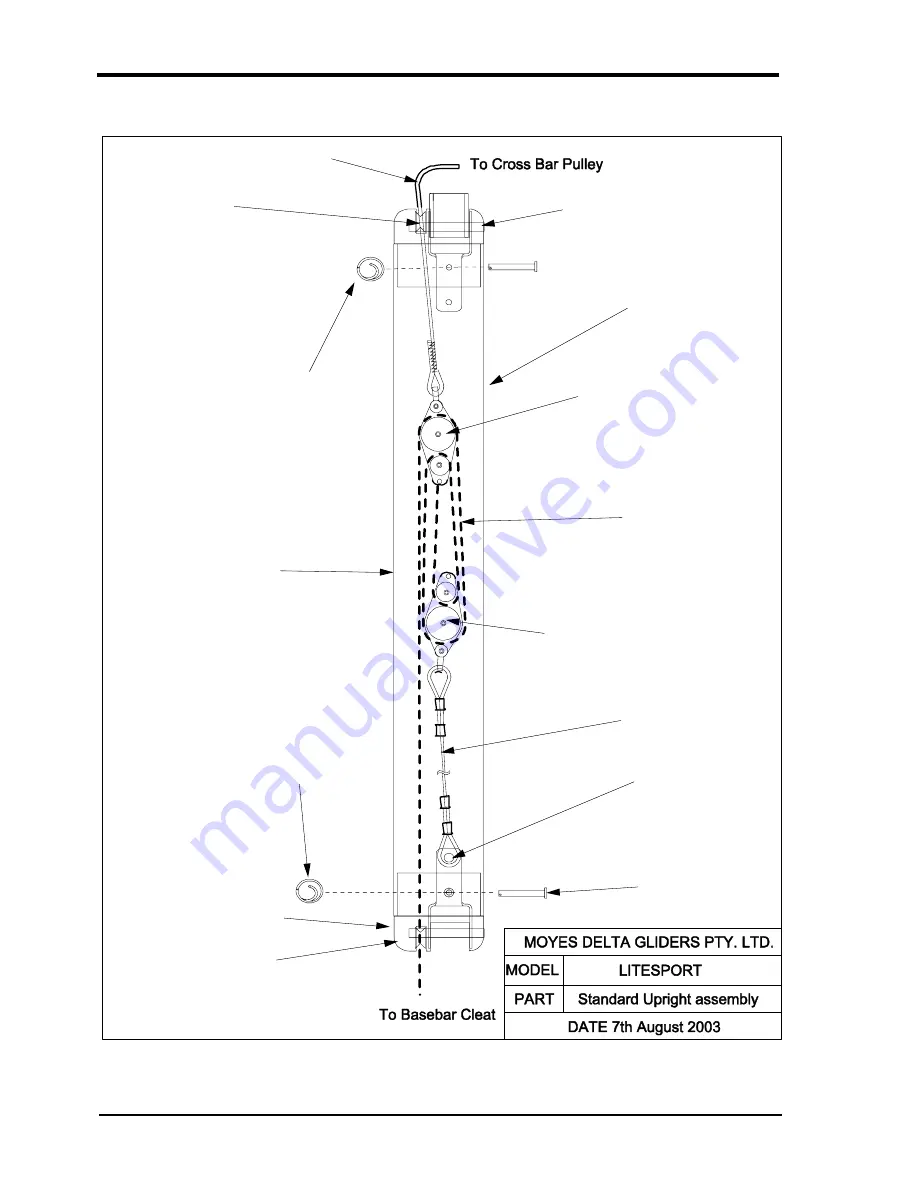
LITESPORT OWNERS MANUAL
44
Version 1.01
Becket Shackle
2C37 Clevis Pin
Upright Fitting Plastic - Top
Pulley PMAEP
Trimmer Sheave
Top VG Rope
Bottom VG Rope
Metal Bushing
Bottom Upright Fitting Plastic
Right Upright
Note: Top VG Rope must go
on the inside of the Trimmer
Sheave.
Note: Bottom VG Rope must go on
the outside of the pulley.
Pulley - Double (Bryco)
Pulley - Double (Bryco)
Safety Ring
Safety Ring
Clevis Pin 2C37
Bottom VG Wire
Pulley HK415
Note: The bottom VG Rope is tied
off at the top pulley. Older models
may only have one pulley at the
bottom, therefore the rope is
tied off on the bottom pulley.
Summary of Contents for LITESPORT 4
Page 1: ...Moyes Delta Gliders Pty Ltd Version 1 01 LITESPORT owners manual...
Page 2: ......
Page 40: ...LITESPORT OWNERS MANUAL 38 Version 1 01...
Page 42: ...LITESPORT OWNERS MANUAL 40 Version 1 01...
Page 43: ...LITESPORT OWNERS MANUAL Version 1 01 41...
Page 44: ...LITESPORT OWNERS MANUAL 42 Version 1 01...





























